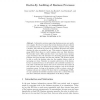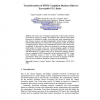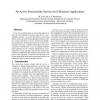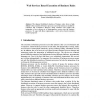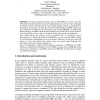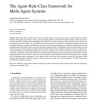150
click to vote
TOPNOC
2010
14 years 7 months ago
2010
Information systems supporting business process are mostly very complex. If we have to ensure that certain business rules are enforced in a business process, it is often easier to ...
116
click to vote
RULEML
2010
Springer
14 years 11 months ago
2010
Springer
The main source of changing requirements of the dynamic business environment is response to changes in regulations and contracts towards ...
104
click to vote
SIGMOD
2002
ACM
15 years 11 days ago
2002
ACM
Service based architectures are a powerful approach to meet the fast evolution of business rules and the corresponding software. An active functionality service that detects event...
104
click to vote
RML
2002
15 years 12 days ago
2002
The inherent distributed structure of business rules shows a high affinity to the execution of business processes across the internet, as needed for e-business and e-commerce. Howe...
125
click to vote
RML
2002
15 years 12 days ago
2002
Conceptual modeling techniques such as EER, ORM and to some extent the UML have been developed in the past for building information systems. These techniques or suitable extensions...
106
Voted
RE
2002
Springer
15 years 12 days ago
2002
Springer
We present experience with improving the requirements engineering process for a telecommunications electronic clearinghouse that connects multiple trading partners. Software failu...
JOT
2007
2007
A Framework to Specify Declarative Rules on Objects, Attributes and Associations in the Object Model
15 years 19 days ago
There are various mechanisms for creating an application object model. These mechanisms are used for modeling the application Meta model and the user models. Some of the mechanism...
126
Voted
INTERNET
2007
15 years 19 days ago
2007
it’s hardly Earth-shattering: abstracting your business services and separating them from your applications can yield an overall system that’s easier to build, maintain, and ex...
131
click to vote
MAGS
2006
15 years 21 days ago
2006
Multi-Agent Systems (MAS) have become increasingly mature, but this maturity does not make the traditional Object Oriented (OO) approaches obsolete. On the contrary, building MAS i...
101
click to vote
LOBJET
2006
15 years 21 days ago
2006
Many object-oriented software applications contain implicit business rules. Although there exist many approaches that advocate the separation of rules, the rules' connections ...
